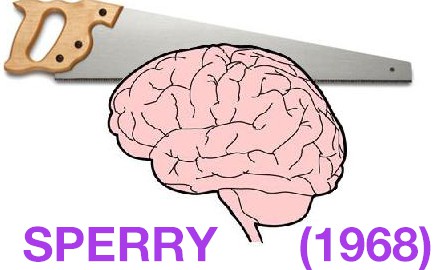Sperry, R. W. (1968). Hemisphere deconnection and unity in conscious awareness. American Psychologist, 23(10), 723.
This is the classic biological psychology study which you will look at for your H167 AS OCR Psychology exam. You will also need this study for your OCR H567 A Level Psychology core studies exam.
Background
The theme of the biological psychology studies in the H167 exam is regions of the brain. This study by Sperry (1968) has the tagline by OCR: Split-brain Study.
What does it mean to have a ‘split-brain’?
The brain is composed of two cerebral hemispheres: the left hemisphere and the right hemisphere. These hemispheres are connected in the brain by the corpus callosum, and other smaller connections, but we need not worry about them here. Having a ‘split-brain’ simply means that the corpus callosum has been severed.
Continue reading Sperry (1968) – Split Brain Study

